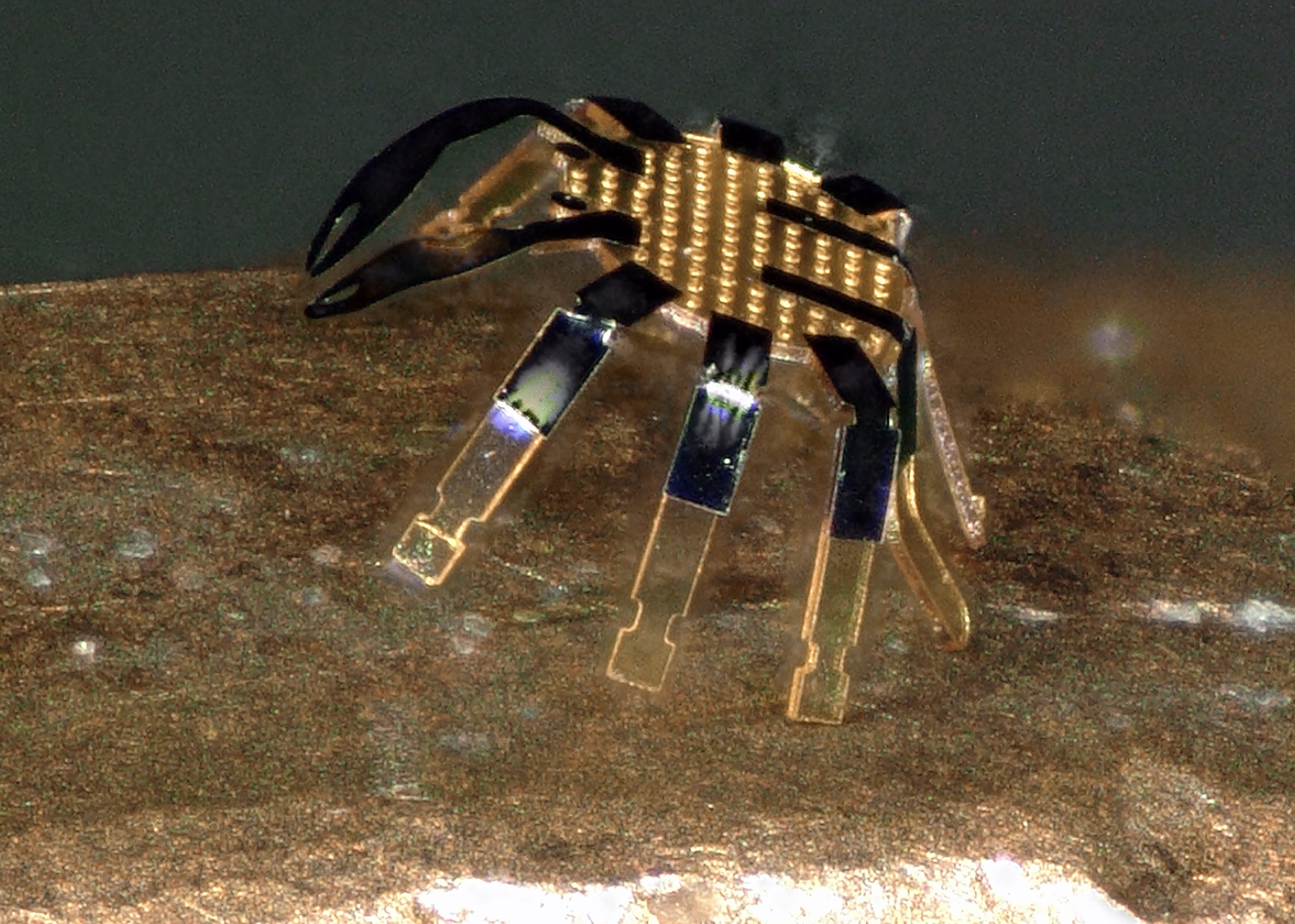How small is Northwestern University’s robot crab? It’s sit-on-the-side-of-a-penny small. It’s half a millimeter wide — making it even smaller than a common flea.
Researchers behind it have determined a fairly simple way to control it remotely — when heat is applied to the system, its thin coating of glass deforms the system’s shape, creating locomotion in the process.
Using a laser, the robot can be quickly heated, owing to its tiny surface area. When the laser is turned off, it rapidly cools. Doing so in quick succession causes the robot to walk. To make it go left, the laser scans right to left. To go right, the laser does the opposite.

A tiny robot crab scuttles across the frame. Image Credits: Northwestern University
“Our technology enables a variety of controlled motion modalities and can walk with an average speed of half its body length per second,” says lead researcher, Yonggang Huang. “This is very challenging to achieve at such small scales for terrestrial robots.”
The team says it built the robot in a manner similar to creating pop-up books. According to Northwestern, first, the team fabricated precursors to the walking crab structures in flat, planar geometries. Then they bonded these precursors onto a slightly stretched rubber substrate. When the stretched substrate is relaxed, a controlled buckling process occurs that causes the crab to “pop up” into precisely defined three-dimensional forms.

Tiny robot crab. Image Credits: Northwestern University
The method allows for the creation of various shapes. In addition to the crab, the team was able to design tiny inchworms around a millimeter in size, along with beetles and crickets. It might be a bit of a stretch to call the tiny system a proper robot, but the creation of such small, remote-controlled systems is exciting nonetheless. In the future, they could be used to squeeze into tight spaces to perform simple tasks.
from TechCrunch https://ift.tt/XyldMGY
via Tech Geeky Hub


No comments:
Post a Comment